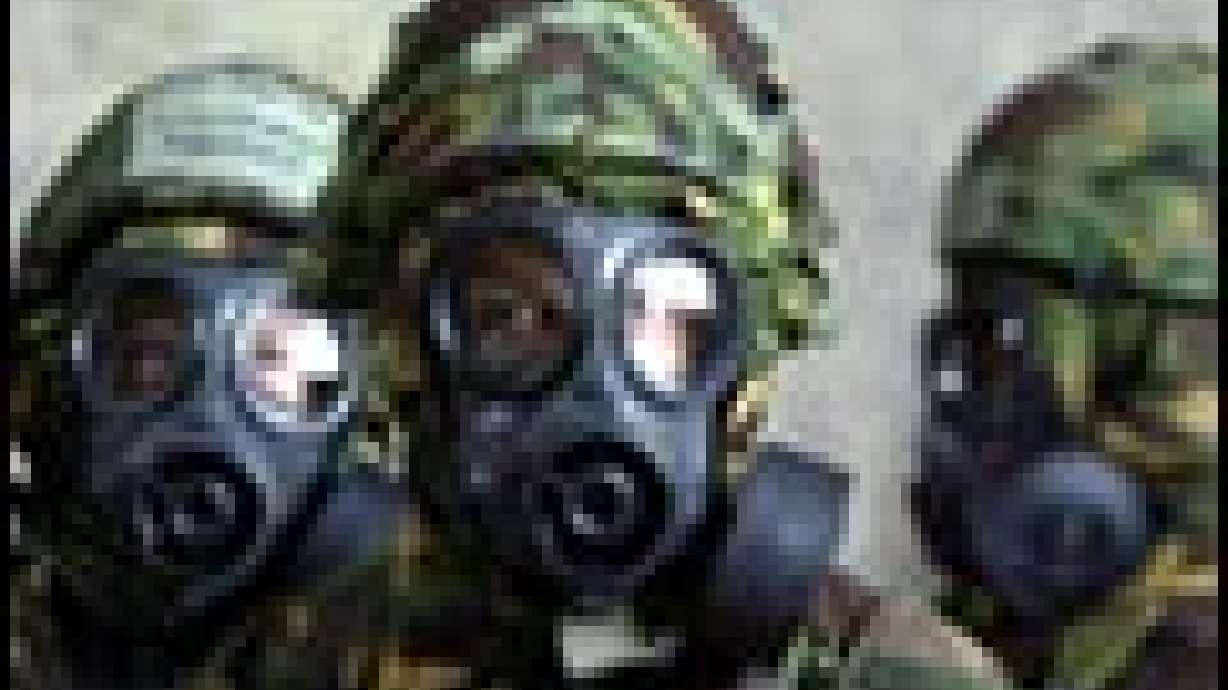Estimated read time: 3-4 minutes
This archived news story is available only for your personal, non-commercial use. Information in the story may be outdated or superseded by additional information. Reading or replaying the story in its archived form does not constitute a republication of the story.
VIENNA, Austria (AP) -- High levels of radioactivity are normal at Iraq's main nuclear research center, the U.N. nuclear agency said Friday, deflating speculation that U.S. Marines might have found new evidence of a weapons program at the site.
International Atomic Energy Agency chief Mohamed ElBaradei said he asked the United States to secure the Tuwaitha nuclear complex as a precaution. But ElBaradei said high radiation readings there were normal, suggesting the "off the charts" readings the Marines reported earlier this week were nothing unusual.
"Until our inspectors return to Iraq, the U.S. has responsibility for maintaining security at this important storage facility," ElBaradei said, adding that he had received assurances from Washington that the complex would be protected and access to it would be restricted.
ElBaradei did not address reports that radiation might be leaking from Tuwaitha, but the agency said in a statement Friday that "in some buildings, the IAEA has documented higher than normal radiation levels, attributable to Iraq's past nuclear weapons program and the presence of radioisotopes." It warned the military to take "great care" at the site.
Leaders of a Marine Corps combat engineering unit claimed earlier this week to have found an underground network of laboratories, warehouses and bombproof offices beneath the 70-building complex 18 miles south of Baghdad.
The Marines said 14 buildings at the site emitted unusually high levels of radiation, and that a search of one building revealed numerous drums containing highly radioactive material.
However, the Vienna-based IAEA -- which has inspected Tuwaitha at least two dozen times and maintains a thick dossier on the site -- said Iraq was allowed to keep several tons of low-grade uranium and other nuclear material there under IAEA seal because the material could not be used directly for weapons.
An expert familiar with the inspections, speaking on condition of anonymity, told The Associated Press on Friday that some of those seals apparently already were broken by the time the Marines arrived at Tuwaitha.
It was unclear whether any materials were missing, or if they could be used by terrorists to construct a "dirty bomb."
Tuwaitha contains 1.8 tons of low-grade, enriched uranium and several tons of natural and depleted uranium. The uranium was inspected by the U.N. nuclear agency twice a year.
Most of the radioactive material at Tuwaitha is stored near the main complex in three buildings known as Location C, the IAEA said. Seals were placed on the buildings themselves as well as the drums they contained, the agency said.
"As soon as circumstances permit, the IAEA should return to verify that there been no diversion of this material," ElBaradei said.
IAEA inspectors visited Tuwaitha about a dozen times since December and most recently Feb. 6. It was among the first sites that IAEA inspectors sought out after the resumption of inspections Nov. 27 after a nearly four-year break.
American intelligence analysts said before the U.S.-led war began that new structures photographed at Tuwaitha might indicate a revival of weapons work. IAEA inspectors checked but found nothing, and the inspections expert told AP that satellite photos would have betrayed any construction of a clandestine underground complex.
The Tuwaitha complex, run by the Iraqi Atomic Energy Commission, was the heart of Saddam Hussein's former nuclear program and was involved in the final design of a nuclear bomb before Iraq's nuclear program was destroyed by U.N. teams after the 1991 Gulf War.
The IAEA told the Security Council just before the war it had uncovered no firm evidence that Saddam had renewed his nuclear weapons program.
(Copyright 2003 by The Associated Press. All Rights Reserved.)








